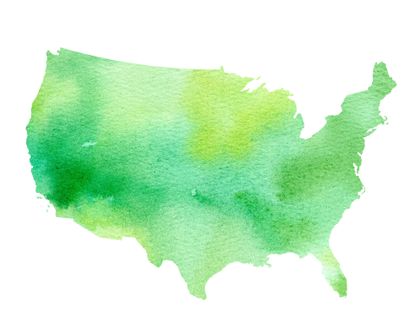Child Tax Credit 2023: Who Qualifies and What It’s Worth
How much will your child tax credit be for 2023?


The child tax credit (CTC) allows eligible parents and caregivers to reduce their tax liability and might even result in a tax refund. However, not everyone can claim the credit, and credit amounts can differ for those who can. That’s because the 2023 child tax credit (for taxes filed in 2024) is based on income, filing status, the number of children, and whether the IRS considers your dependent a qualifying child.
Here is what else you need to know about the 2023 child tax credit, including how much (if anything) you can expect this year and new child tax credit changes that could be coming soon from Congress.
Child tax credit 2023 FAQs

To continue reading this article
please register for free
This is different from signing in to your print subscription
Why am I seeing this? Find out more here

How much is the 2023 child tax credit?
Right now, unless Congress makes last-minute changes, the 2023 child tax credit is worth up to $2,000 per qualifying child. However, the credit is not fully refundable, which means that you cannot receive the entire $2,000 back as a tax refund, even if you have a $0 tax liability and qualify for the full credit amount.
That’s because some of the credit (the non-refundable portion) can only reduce the amount of federal tax you owe. But there is good news. A portion of the CTC is refundable, and the refundable amount is higher for 2023 than it was the year before.
- For 2023, the refundable portion of the credit is $1,600.
- For the prior year, only $1,500 was refundable.
Note: Keep in mind that not everyone can receive the full amount of the 2023 child tax credit. That means it’s possible to receive a tax refund lower than $1,600 even if you don’t owe any tax. That’s because $2,000 per child is the maximum amount of the credit, and $1,600 per child is the maximum amount of the refundable portion. (More on this below.)

What are the child tax credit 2023 income limits?
There are income limits for claiming the federal child tax credit, but these limits are more generous than for some other types of credits. For 2023, joint filers with a modified adjusted gross income (MAGI) of up to $400,000 ($200,000 for other filers) are eligible for the maximum credit amount. If your MAGI is above the income threshold, you may still qualify for a partial credit. That’s because the amount of the credit is reduced by $50 for every $1,000 your MAGI is above the limit. Here are some examples:
- A head of household filer with a MAGI of $250,000 would not qualify for the CTC since their MAGI is $50,000 over the income threshold, and 50x50 is $2,500, which is more than the credit is worth.
- Joint filers with a MAGI of $405,000 would qualify for a reduced credit of $1,750 since their income is only $5,000 above the threshold.

What are the child tax credit requirements?
Income limits aren’t the only criteria filers must meet to qualify for the 2023 child tax credit. Taxpayers must also have at least one qualifying child, and the IRS has strict guidelines for determining what children qualify.
- You must be able to claim the child as a dependent on your tax return.
- In most cases, the child must have lived with you for at least half the year.
- You must have provided at least half of the child’s financial support during the last year.
- The child must hold a valid Social Security number.
- The child must be your son, daughter, stepchild, foster child, brother, sister, half-brother, half-sister, stepbrother, stepsister, or a descendant of any of those people (for example, a grandchild).
(Note: The child won’t qualify if they file a joint return unless they file it to claim a refund of withheld income taxes or estimated taxes paid.)

What is the child tax credit age limit?
In addition to the rules above, your child must have been under the age of 17 at the end of 2023. This means a child who turns 17 during the tax year doesn’t qualify for the purpose of the CTC. However, a 17-year-old child (or any age dependent) may qualify for the other dependent tax credit, which is worth $500.
Can both parents claim the same child? A qualifying child can only be claimed by one parent (unless the parents file a joint return). If both parents attempt to claim the same child and the child lived with each parent for the same amount of time during the tax year, the IRS will treat the dependent as the qualifying child of the parent who had a higher adjusted gross income (AGI) for 2023.

Is there an expanded child tax credit?
While there is not currently an expanded federal child tax credit for 2023, some Congressional lawmakers agreed to a bipartisan tax framework earlier this year, which includes a new child tax credit that would partially restore the expanded pandemic-era credit. If passed in time for the 2024 tax filing season eligible families would be able to claim the expanded credit for the 2023 tax year.
At this point, the U.S. House of Representatives approved the tax bill, but it has been stalled in the U.S. Senate. However, recent negotiations provide hope that the credit could still become law before the 2023 returns are due. Kiplinger will update this article as more information becomes available.
Additionally, several states have made changes to their child tax credits in 2023. For example, Maryland, Massachusetts, Vermont, New Mexico, and New Jersey have expanded child tax credits at the state level to make them refundable, meaning eligible families may receive the credit amount back as a tax refund when they file their year-end state tax returns. The newly implemented Minnesota child tax credit is worth up to $1,750 per qualifying child for the 2023 tax year.

How much is the child tax credit for 2024?
Unless Congress changes the child tax credit, for the 2024 tax year (returns you'll file in 2025), the refundable portion of the child tax credit is scheduled to increase to $1,700.
That means eligible taxpayers could receive an additional $100 per qualifying child back as a tax refund. (Note: Income limits apply.)
And if Congress doesn't make legislative changes to the credit, the child tax credit for 2024 will remain at up to $2,000.
For more information on the 2024 federal child tax credit amount and inflation-adjusted amounts for other popular family tax credits, see: How Much is the Child Tax Credit for 2024?
RELATED CONTENT
-What's Happening With the New Child Tax Credit?
-10 Most-Overlooked Tax Deductions and Credits
Get Kiplinger Today newsletter — free
Profit and prosper with the best of Kiplinger's advice on investing, taxes, retirement, personal finance and much more. Delivered daily. Enter your email in the box and click Sign Me Up.

Katelyn has more than 6 years of experience working in tax and finance. While she specialized in tax content while working at Kiplinger from 2023 to 2024, Katelyn has also written for digital publications on topics including insurance, retirement, and financial planning and had financial advice commissioned by national print publications. She believes knowledge is the key to success and enjoys providing content that educates and informs.
-
 The Secret Credit Card for Amazon Prime Day Shopping
The Secret Credit Card for Amazon Prime Day ShoppingThis "secret" credit card for Amazon Prime Day shopping can maximize your cash back rewards. Plus get a $300 bonus.
By Erin Bendig Published
-
 This Trust Can Protect Your Assets From Long-Term Care Costs
This Trust Can Protect Your Assets From Long-Term Care CostsA Medicaid asset protection trust can help ensure your protected assets go to your beneficiaries rather than your long-term care, but it has to be set up properly.
By Joe F. Schmitz Jr., CFP®, ChFC® Published
-
 HSA Contribution Limit Rising Again for 2025
HSA Contribution Limit Rising Again for 2025Health Savings Contribution limits matter when it comes to maximizing your tax-advantaged health savings account.
By Kelley R. Taylor Last updated
-
 Final EV Tax Credit Rules Don’t Change Much for Consumers
Final EV Tax Credit Rules Don’t Change Much for ConsumersTax Credits Treasury and IRS have finalized regulations for the up to $7,500 electric vehicle tax credit.
By Kelley R. Taylor Last updated
-
 Three 'Hidden Costs' of Health Savings Accounts (HSAs)
Three 'Hidden Costs' of Health Savings Accounts (HSAs)Health Savings HSAs offer valuable tax benefits, but can 'hidden costs' erode those advantages?
By Kelley R. Taylor Last updated
-
 How the Biden Marijuana Shift Could Impact Taxes
How the Biden Marijuana Shift Could Impact TaxesTax Rules A pending Biden administration marijuana rule change could help some businesses lower their taxes.
By Kelley R. Taylor Last updated
-
 Georgia Has a New 2024 Income Tax Rate
Georgia Has a New 2024 Income Tax RateTax Cuts Georgians now have a tax package containing income tax cuts, childcare relief, and potential property tax caps.
By Kelley R. Taylor Last updated
-
 A Bunch of IRS Tax Deductions and Credits You Need to Know
A Bunch of IRS Tax Deductions and Credits You Need to KnowTax Breaks Lowering your taxable income is the key to paying less to the IRS. Several federal tax credits and deductions can help.
By Kelley R. Taylor Last updated
-
 Don’t Miss This $2,500 Tax Break for Paying Your Student Loan
Don’t Miss This $2,500 Tax Break for Paying Your Student LoanTax Deductions Do you qualify for the student loan interest deduction this year?
By Katelyn Washington Last updated
-
 Six Tax Breaks That Get Better With Age
Six Tax Breaks That Get Better With AgeTax Breaks Depending on your age, several tax credits, deductions, and amounts change — sometimes for the better.
By Kelley R. Taylor Last updated
